#Arp 284
Photo

Arp 284: NGC 7715 (left) and NGC 7714 (right) // Gary Imm
#astronomy#astrophotography#galaxy#spiral galaxy#star-forming galaxy#interacting galaxies#peculiar galaxy#Arp 284#NGC 7715#NGC 7714#pisces
44 notes
·
View notes
Text
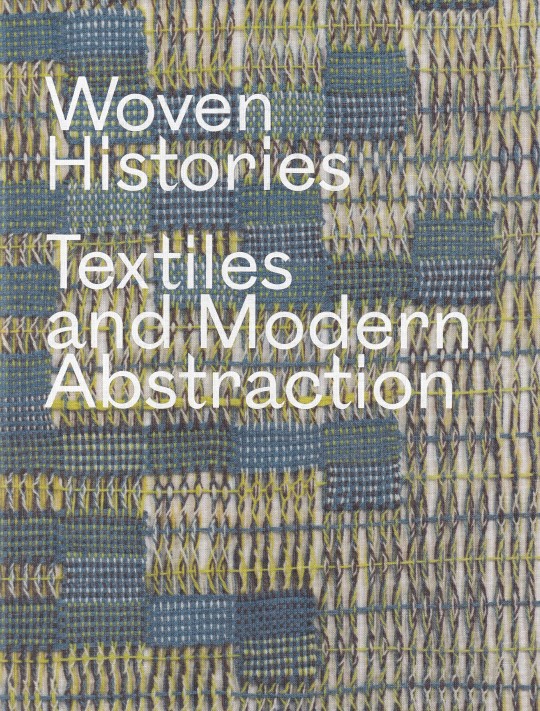

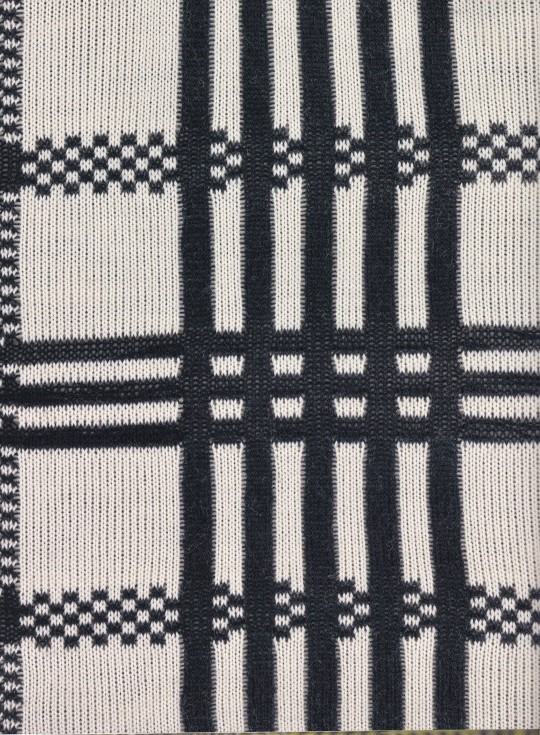



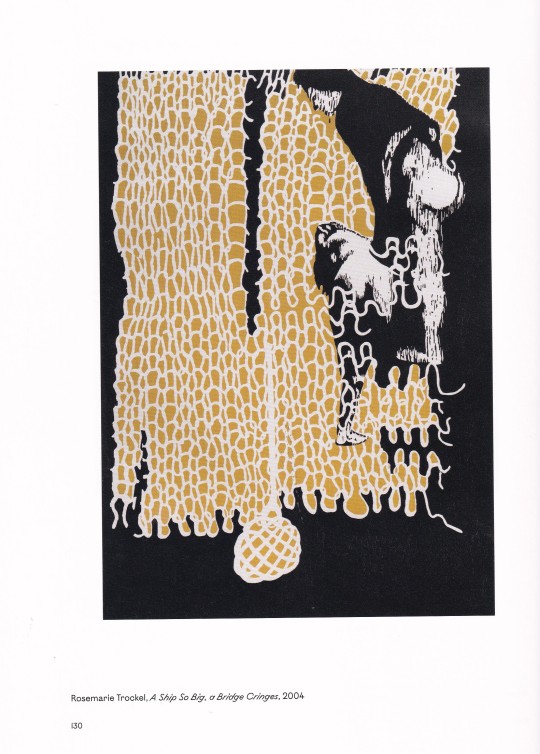





Woven Histories
Textiles and Modern Abstraction
Production by Brad Ireland and Christina Wiginton, Editing by Magda Nakassis,
National Gallery of Art, Washington copublished by The University of Chicago Press, 2023, 284 pages, ISBN 978-0-226-82729-2
euro 65,00
email if you want to buy [email protected]
Exhibition dates : Los Angeles County Museum Art 2023, Washington Nat.Gall.Art 2024, Ottawa Nat.Gall.Canada 2024,New York MoMA 2025
Richly illustrated volume exploring the inseparable histories of modernist abstraction and twentieth-century textiles.
Published on the occasion of an exhibition curated by Lynne Cooke, Woven Histories offers a fresh and authoritative look at textiles—particularly weaving—as a major force in the evolution of abstraction. This richly illustrated volume features more than fifty creators whose work crosses divisions and hierarchies formerly segregating the fine arts from the applied arts and handicrafts.
Woven Histories begins in the early twentieth century, rooting the abstract art of Sophie Taeuber-Arp in the applied arts and handicrafts, then features the interdisciplinary practices of Anni Albers, Sonia Delaunay, Liubov Popova, Varvara Stepanova, and others who sought to effect social change through fabrics for furnishings and apparel. Over the century, the intersection of textiles and abstraction engaged artists from Ed Rossbach, Kay Sekimachi, Ruth Asawa, Lenore Tawney, and Sheila Hicks to Rosemarie Trockel, Ellen Lesperance, Jeffrey Gibson, Igshaan Adams, and Liz Collins, whose textile-based works continue to shape this discourse. Including essays by distinguished art historians as well as reflections from contemporary artists, this ambitious project traces the intertwined histories of textiles and abstraction as vehicles through which artists probe urgent issues of our time.
24/12/23
#Woven Histories#textiles#modern abstraction#Anni Albers#Sonia Delaunay#Popova#Stepanova#Lenore Tawney#Sheila Hicks#textiles books#fashion books#fashionbooksmilano
59 notes
·
View notes
Photo

Distant Merger
46 notes
·
View notes
Text
ARP 284 a Galactic Merger in Pisces
Here is a pair of galaxies from the Arp Atlas of Peculiar Galaxies, this one designated ARP 284 and showing the results of NGC 7714 and NGC 7715 interacting with each other causing a violent and dramatic change in both galaxy shapes. You can see the bridge of stars allowing material to transfer from the smaller galaxy to the larger one. The magnitudes of these galaxies are listed as 13 and 15 in…
View On WordPress
0 notes
Photo


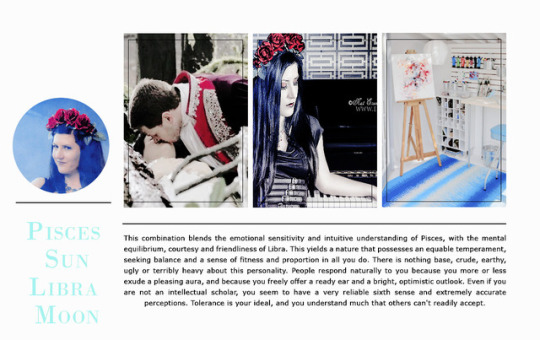
Pisces Constellation
Pisces constellation lies in the northern sky. Its name means “the fish” (plural) in Latin.
Pisces is one of the largest constellations in the sky. It is one of the zodiac constellations, first catalogued by the Greek astronomer Ptolemy in the 2nd century. Its symbol is .
Pisces lies between Aries constellation to the east and Aquarius to the west. The two celestial fish represent Venus and Cupid in Roman mythology, who transformed themselves into fish in order to escape the monster Typhon. The Vernal equinox, the point at which the Sun moves to the northern hemisphere across the equator every year, is currently located in Pisces.
Pisces constellation also contains a number of interesting deep sky objects, among them the face-on grand design spiral galaxy Messier 74 (NGC 628), the Pisces Dwarf galaxy, the double radio galaxy 3C 31, and the colliding galaxy pair Arp 284.
MYTH
Pisces constellation is of Babylonian origin. The Babylonians saw it as a pair of fish joined by a cord. The constellation is usually associated with the Roman myth of Venus and Cupid, who tied themselves with a rope and transformed into fish to escape the monster Typhon. The star Alpha Piscium, also known by the traditional name Alrescha (“the cord” in Arabic) marks the knot of the rope.
The constellation is associated with a similar story in Greek mythology. After the Olympian gods had defeated the Titans and the Giants, Gaia, or Mother Earth, coupled with Tartarus, the region of the Underworld where Zeus held the Titans imprisoned, and they had Typhon, the scariest monster the world had ever seen. Typhon had a hundred dragon’s heads, with fire blazing from all his eyes.
Gaia sent Typhon to defeat the gods. Pan was the first to see him coming.
He alerted the other gods and then transformed himself into a goat-fish and jumped into the river Euphrates to escape the monster. The goat-fish is represented by the constellation Capricornus.
The goddess Aphrodite and her son Eros called to the water nymphs for help and jumped into the river. In one version of the legend, two fishes came to the rescue and carried Aphrodite and Eros on their backs to safety. In another version, the mother and son were themselves transformed into fish. (Source: Constellation Guide)
#10th#June#2018#June 10th 2018#what i love about the zodiac signs#cradle of filth#mine#pisces#lindsay schoolcraft
1 note
·
View note
Text
Reviews 284: Ard Bit
Though I’ve only recently become acquainted with the sonic world of Ard Bit, the composer and sound designer has been producing melancholic downtempo, naturalistic ambient, and ethereal bass music since at least 2009, which saw the release of his debut album Spanon on Symbolic Interaction. The years since have seen a handful of vinyl, cassette, and digital releases come out on labels such as Shipwrec and Lowriders Recordings and now in 2019, Ard Bit returns with his first solo release since 2014’s Ellioth. Six Scores One is a gorgeous cassette journey inspired by the wooded surroundings of Winterswijk and the mysterious and ever-changing environments of the Korenburgerveen, which the artist describes as a place where “you can wander through beautiful forests, wooded banks, streams, and heathland.” And though touches of these settings can be heard throughout the music, with leaves rustling and streams babbling, the sonic world of Six Scores One is more concerned with transformation and disorientation…as if Ard Bit is scoring the unknowable forces and violent energies that lurk behind nature’s beautiful facade. As such, the sonics are as serene as they are bewildering, with crystalline pianos and sorrowful strings floating amidst clouds of glitch, noise, and static. And beneath these strangely glowing hazes, subsonic bass pulsations and downtempo rhythmics work into slow motion beatscapes, with touches of IDM, dub, and DnB hovering around the edges.
Ard Bit - Six Scores One EP (Self Released, 2019)
We start on “Afterhook” and its clattering percussive textures, with pianos dancing beneath the audial confusion. Animalistic lasers and subsonic bass motions build towards a groove, which eventually forms as kick drums and hi-hats lock into a downtempo glide wherein jazzy snare accents are smothered in noise. Stick clicks, rimshots, and vaporous string stabs suffuse the background as the piano continues its chordal adventures and in a moment where the mix washes out, synthetic cellos sit beneath glowing leads while paranoid cymbals skitter across the stereo field. Later, reversing ivory leads are immersed in samples of a babbling brook, which then leads back to the glorious downtempo glide and its whooshing chords and sighing strings. And at certain moments, it all seems to malfunction, with the mix descending into strange miasmas of noise while the cymbal work grows progressively more complex, eventually incorporating IDM accents and 64th note spirals. “Sw6rm” flows seamlessly out of the abstracted soundbath ending “Afterhook” and sees e-pianos dropping twilit reveries over subsonic kick pulses and ominous bass atmospherics. The sonics hint at noir jazz nightscapes and alien futurisms, with dubwise drums slowed to a glacial pace and eventually locking into a funereal downbeat throb, one accented by ride bell taps and dry snares. Cellos sing elegiac fantasias from deep underwater…their mournful songs drifting above a reverb soaked doom dirge, and as gothic choirs emit hovering vocal spells, buzzing waves of static swell then fade away.

“Clouds” emerges from a world of black hole droning and industrialized musique concrète, as zooming oscillations, cut-up samples, and smoldering noises surround a technoid sequence…an early-Heldon style kosmische throb, only transmuted into shadowy realms of bass music mysticism. Bending arps dance in counterpoint and acid synths squelch softly while wavefronts of cyborg static fade in and out, with each swell suffused by insect buzz and extra-terrestrial whispers. The kick drum moves from a barely there tap to a resonant jack as cymbals splay out into spectral hazes and at some point, the rhythms unexpectedly drop, leaving sequences to slowly morph into mist as the spirits floats within cosmic corridors and interstellar caverns. Droplets of metal hit crystal structures, glowing coudforms vibrate out of control, and outer-dimensional beings chant sinister vocalisms, with everything bending and twisting in ways that defy logic. “Monkey” begins with feet rustling through leaves and other such naturalistic field recordings being transmuted and transformed…all while pianos float overhead in a delirium fog...their melodies blurred out yet utterly gorgeous. Bass synthesizers gurgle and growl in the distance, conversations drift through the air, and as the track progresses, the background atmospheres are increasingly overwhelmed by glitching textures…as if drum clicks and rhythmic scrapes have been blasted through a fractal wormhole.
Ambient dreamscapes are immersed in further glitch abstraction at the start of “Ffog,” with bass pulses floating the soul and glowing gemstones of melody moving forwards and backwards through time. It’s a beatless post-rock expanse, wherein starshine sequences and Berlin school lullabies wrap around each other while the mix periodically devolves into manipulated sample weirdness. And at some point, the sprightly synth patterns give way to a world of reversing swirls and beatific ambiance that ever so often threatens towards alien experimentation. Closing piece “Kern” is like awakening in the depths of the cosmos, where galactic winds carry clouds of glowing dust. Ethereal chord patterns pulse and swarm according to a unique dream logic and wailing synthesizers drift gently by, before everything is washed out by a bass heavy refrain. Descending progressions pull the heart into the depths of melancholy while the mind is dazzled by glitching electrohazes and as the track continues, we descend further and further into landscapes of sonic psychedelia. Then, almost out of nowhere, a propulsive bassline starts chugging through the sonic shadowrealms, soon joined by cosmic pads that slide side to side in slow motion majesty. Everything is heavy with vibes of mystery and sorrow and at certain moments, touches of evil kiss the mix as throbbing bass patterns open up into a primal growl. But eventually, Ard Bit seamlessly morphs things back to the ambient bass descents and Twin Peaks atmospherics, which themselves slowly fade into bit-crushed whispers.
(image from my personal copy)
#ard bit#ard janssen#six scores one#2019#downtempo#ambient#chill out#atmospheric#bass music#glitch#idm#ethereal#post-classical#naturalistic#magical#mystical#korenburgerveen#winterswijk#forests#peat bog#heath#meadows#streams#dub#glacial
0 notes
Text
How Bad Did Mopar’s 340 beat Ford & Chevy? Shocking New Data!
Everyone knows Mopar factory horsepower ratings in the muscle car era were the most honest of them all; if the 440 Magnum was advertised with 375 horsepower, that’s what it made. And let’s not forget how the 426 Street Hemi was cleverly under-rated by the ad guys. Rather than tout its nearly 500 horsepower at 6,000 rpm (and give the safety watchdogs even more to chew on), Chrysler intentionally stopped counting at 5,000 rpm, where 425 horsepower was legitimately on tap.
But what about the 340, launched in 1968 specifically for lightweight A-Body installations, then spread throughout the B- and E-Body performance models in 1970-’73? Did it really make “only” 275 horsepower in pre-’72 mode with 10.5:1 compression and 2.02-inch intake valves? And what about the 1970 SCCA-inspired 340 Six Pack installed in those special Challenger T/A (2,399 built) and AAR ’Cuda (2,724 built) E-Bodies? Was the claim of its 290 horsepower (5,000 rpm) and 345-lb-ft (3,200 rpm) realistic?
We’ve always wanted to know, and tagged along with Donnie Wood and Steve Chmura of R.A.D. Auto Machine to watch the assembly of a nearly stock-specification 340, and the subsequent dyno test comparison with factory 4-BBL and 6-BBL induction setups. The results was surprising and not surprising at the same time.
On factory claims of 275 horsepower at 5,500 rpm and 340 lb-ft (3,200 rpm), we got 320 horsepower at 5,500 rpm and 368 lb-ft at 3,500 rpm. So it’s clear Mopar understated the facts by 45 horsepower and 28 lb-ft. Then we replaced the manifolds with a set of headers and got 352.1 horsepower and 395.9 lb-ft (at 3,200 rpm)—77.1 horsepower and 55.9 lb-ft higher than published peak claims.
For some in the dyno room, the elevated power readings came as a surprise. Let’s remember, the 340-powered 1968-’69 Dart GTS/Swinger 340 and Barracuda Formula S/’Cuda 340 A-Bodies were initially marketed as budget or “junior” supercars, battling stuff like the SS350 Nova (295 horsepower), W-31 Olds 350 (325 horsepower), Pontiac 350 HO (325 horsepower) and 351 Windsor four-barrel Mustang (290 horsepower). There it would have been great to advertise its real 300-plus horsepower capability against the competition.
But on the other side of the coin, when sold beside 383-powered Road Runners and Super Bees at Plymouth and Dodge dealerships nationwide, the difference between their 335 horsepower rating and the 340’s 320 horsepower may have led to internal competition, and reduced B-Body sales. It’s all water under the bridge at this point, but the 320 horsepower we observed explains a stock 340’s well documented ability to toss any A-Body well into the 14-second zone at the strip. So what about the Six Pack?
Testing RAD’s patience, we asked them to swap intake and exhaust systems on the dyno so we could get more answers. Going back to the factory stock cast-iron exhaust manifolds, a Six Pack replaced the four barrel and we got 356 horsepower at 5,500 rpm and 382 lb-ft at 4,000 rpm. Again, Chrysler’s 1970 claim of 290 horsepower at 5,000 rpm and 345 lb-ft at 3,200 rpm was bettered by 66 horsepower and 37 lb-ft. Finally, we replaced the headers and watched it grow another 20.1 horsepower and 26.9 lb-ft with readings of 376.1 horsepower at 5,500 rpm and 408.9 lb-ft at 4,000 rpm.
So the next time you see a stock 340 or 340 Six Pack, don’t be fooled into thinking it’s a sub-300 horsepower muscle car wannabe. Follow along as we assemble a 340 small-block and put it to the test!
For our rebuild, the stock 4.04-inch bores were enlarged to 4.080 by a 0.040-inch cut on RAD’s Rottler F79A boring machine. Torque plates were bolted to the decks before the Rottler HP6A diamond hone went to work. Sharing the same 3.312-inch stroke with the 273 and 318, the 340’s extra cubes came strictly from its bigger 4.04-inch bores. Bore spacing is 4.46 inches.
Like all LA 273, 318, 340, and 360 engines, the displacement is cast into the driver’s side of the block. Ours was cast on 10-1-71 and originally fitted to a 1972 model year car with reduced 8.5:1 compression, electronic ignition, a Carter Thermo-Quad, and a cast crank. Rated power was 240 horsepower at 4,800 rpm with 290 lb-ft at 3,600 rpm. We’ll bring it back to full-pep 1968-’71 status.
The cheaper cast-iron cranks used in 1972-’73 340s are safe to 400 horsepower, but RAD had several forged cranks on hand (left) so they made the upgrade. At 55.6 pounds, the forged crank is only 2.6 pounds heavier than the casting. Unlike externally balanced 1972-’78 big-blocks, all 1968-up 273 and 318 cast cranks were internally balanced.
With the main saddles aligned on RAD’s Sunnen align hone machine, the Clevite main bearings (PN MS963-P) are installed. The 340 block has thicker bulkheads and wall sections than the 318. Hemi legend Tom Hoover played a key role in developing the A105 340. Read Willem Weertman’s book Chrysler Engines 1922-1998 (SAE Books) for the full story.
Some 11.6 pounds lighter than a forged 440 big-block crank, Donnie sets the crank in place. The cap bolts torque to 85 lb-ft in two steps. While 273 and 318 blocks have two core plugs per side, the 340 (and later 360) have three per side.
For under $300, forged Eagle cap screw rods (left) share the same 6.123 length and weigh 166 grams less (587 versus 753) than factory items (right). At 893 grams the forged Sealed Power pistons (part No. L2316F) are 23 grams heavier than the stock castings. Refurbishing the stock rods can come close to the cost of superior aftermarket offerings. Times have changed, why go there?
Hastings moly-faced rings (part No. 2M694-040) share the same 5/64, 5/65, 3/16 width as stock, and are gapped at 0.018 inch. The Sealed Power pistons feature anti-scuff coating on the skirts and deliver the same 10.5:1 compression as stock. Note the floating pins and clips. The stock 340 pins are also floating type, all other LA pins are press-fit.
A mild hydraulic flat-tappet cam from Sealed Power (part No. LS644) with 0.429-/0.442-inch lift, 201-/ 220-degrees duration and 114 degree LSA matches the cam used in 340s mated to the Torqueflite automatic transmission. Four-speed 340s got a slightly hotter cam in 1968 (only) with 0.445-/0.455-inch lift and a few more degrees of overlap. Stock-spec hydraulic lifters are also from Sealed Power (part No. HT211B). The 1970 340 Six Pack used the same Torqueflite-spec cam used in all other 340s that year.
Standard-issue windage trays separated the 340 from lesser LA small-blocks until the E58 360 came along in the late seventies. Chrysler claimed it saved 5 to 10 horsepower. Specific main cap fasteners with tapped receiver holes accept the tray hold-down bolts on caps two and four. The stock-spec oil pump (part No. M-72) and 5/8-inch pickup tube and screen (part No. 72-S2) are from Melling.
The stock pan was dented and rusty so a new 5-quart unit from Spectra (part No. CRB-09B) went on. Don’t forget, 360 pans are not interchangeable.
With the cam thrust plate, Engine Pro double-roller timing set (part No. 3028), fuel pump eccentric, and oil-sling disc in place, a fresh Pioneer die-cast aluminum front cover (part No. 500390) seals the block.
After a light surface cut to restore deck flatness, the stock J heads (casting number 3418915-H) were cut for PC valve seals. Bronze wall valve guides were also installed. With the cutting fixture in between, note the stock guide boss (left) and post-surgery boss (right). The outside diameter is reduced to 0.530 inch so PC seals press right on.
A “bowl hog” cutter (center) was inserted in the Rottler SGF8 seat machine to lightly dress the throats (left). We argued against this step to keep things stock for testing but were overruled by the engine owner. It’s doubtful this work added more than a few clicks to the results with the mild cam. No other porting or hand blending was performed.
Stock-diameter 2.02-/1.60-inch swirl-polished Manley valves replace the burnt stockers. Some 1972 and all 1973 340s were demoted to 1.88-inch intake valves but retained the 1.60 inch exhaust valves.
With FelPro Permatorque composite gaskets (part No. 8553PT) in place, the ARP half-inch head bolts were torqued to 100 lb-ft in three steps. The neutral balance crank damper is from Liberty Performance Components (part No. LPB1004ST). The 340 intake port windows measure 2.2 square inches versus 1.60 on the 318 head. The big-port 340 head was adopted for the 360 “family car” engine in 1971 (with smaller 1.88-inch intake valves).
We deviated from the stock stamped rocker arms and chosen an internet-sourced roller rocker arm kit. Complete with shafts, fasteners, rocker arms, and even the spacer blocks, the $180 purchase price was amazing. Unfortunately, the undersides of the rocker arms contacted the 1.440-inch diameter valve spring retainers. The pen points to the large gap between roller and valve stem tip during contact.
For kicks, Donnie logged onto the AERA online data site (a paid subscription service) and unearthed this service bulletin from January of 1970. Though it isn’t directly applicable to our situation, it confirms the 340’s history of rocker-to-retainer contact. Chrysler’s remedy called for grinding 0.030-inch clearance slots into the stock rocker arms!
COMP Cams beehive valve springs (part No. 26986-16) and matching 1.340-inch diameter retainers (part No. 795-16) saved the day. The 10-degree locks were transferred and reused. With 123 pounds on the seat and 284 pounds at 0.500-inch lift, the tapered springs restored the ability to use the roller rocker kit. The pen points to the resulting clearance. Stock 340 valve springs were rated at 96/242 (I/E) pounds and used Hemi-style surge dampers.
The roller rocker arm kit rendered the Chrysler’s 7.500-inch 340 push rods too long for the job. Donnie found some 7.266-inch long, 5/16-inch diameter COMP Cams push rods (part No. 7809-16) from a Brand X application. The lifter preload was set at ½ turn beyond zero lash.
Auto Metal Direct (AMD) supplied fresh 1970-spec 340 valve covers (part No. EF-3882AR), breather (part No. EF-3881-BTB1), and oil fill cap (part No. EF-3881-CAP). The original parts (in orange) can trap residual grime that can never be fully eradicated. AMD offers year-correct valve covers for all popular small- and big-block applications, not to mention a growing line of excellent, high-precision body panels.
Though all 1965-’67 A861 273 four-barrel engines got dual-point distributors, they were only installed on four-speed 340s in 1968-’71. For 1972, Chrysler’s breaker-less electronic ignition was standardized on the 340 (optional in ’71). Our 340 uses a Mopar Performance electronic unit (part No. P3690430, right). Total timing is set at 35 degrees BTDC.
The stock dual-plane four-barrel manifold (46.6 pounds) is an excellent piece. The Edelbrock-sourced Six Pack (23.4 pounds) is the only aluminum intake manifold ever offered on the 340. A full two inches taller, the added runner and plenum volume are a huge bonus. Our Six Pack is a 1970 unit; Edelbrock still makes them.
There’s no Six Pack setup better than a brand new one, and Holley still sells ’em. Unlike swap meet stuff, no gurus have been inside tinkering, and the optimal factory settings are ready to deliver crisp cruising or neck-snapping, bog-free surges when wanted. The center carb (part No. 0-4792) has 1.50-inch diameter throttle blades and is rated at 350 cfm. The twin 500cfm outboard carbs (part No. 0-4790) are vacuum operated.
Lacking a vintage Carter AVS (1968-’70) or Thermo-Quad (1971-’73) we substituted an Edelbrock Performer 1405 for baseline testing. Its 600cfm rating puts it between the 570cfm AVS (1968-’70) and 750cfm TQ (1971-’73), both of which Chrysler claimed made the same 275 horsepower atop the 340.
So much for Chrysler’s claims! With the single four-barrel cast-iron factory dual-plane intake and exhaust manifolds, the basically stock 340 revealed the glorious truth with 320.3 horsepower at 5,500 rpm. Torque was 368 lb-ft at 3,500 rpm. There’s no way our minor bowl work, roller-tip rocker arms, and lighter rods added 45.3 horsepower and 28 lb-ft to Chrysler’s claim. The 340 is one potent little animal!
OLYMPUS DIGITAL CAMERA
With the simple addition of 1 7/8-inch headers, output jumped to 352.1 horsepower at 5,300 rpm and 395.9 lb-ft of torque. In a 3,200-pound A-Body with 3.91 gears and traction, mid-thirteen second e.t.s are guaranteed.
OLYMPUS DIGITAL CAMERA
With the Six Pack installed, we reverted to the factory exhaust manifolds and got 356 horsepower at 5,500 rpm and 382 lb-ft at 4,000 rpm. The trio of Holley 2300-series carburetors were intentionally run straight out of the box. Donnie says, “Resist the urge to fiddle. As long as the linkage and vacuum hose routing is correct, Six Packs are maintenance-free on the street.”
No holds barred, the Six Pack with the same 1 7/8-inch headers cranked 376.1 horsepower and 408.9 lb-ft at 4,000 rpm. The air/fuel readings were safe with box-stock calibrations. After testing, the engine was sprayed Street Hemi Orange.
The post How Bad Did Mopar’s 340 beat Ford & Chevy? Shocking New Data! appeared first on Hot Rod Network.
from Hot Rod Network http://www.hotrod.com/articles/bad-mopars-340-beat-ford-chevy-shocking-new-data/
via IFTTT
0 notes
Photo


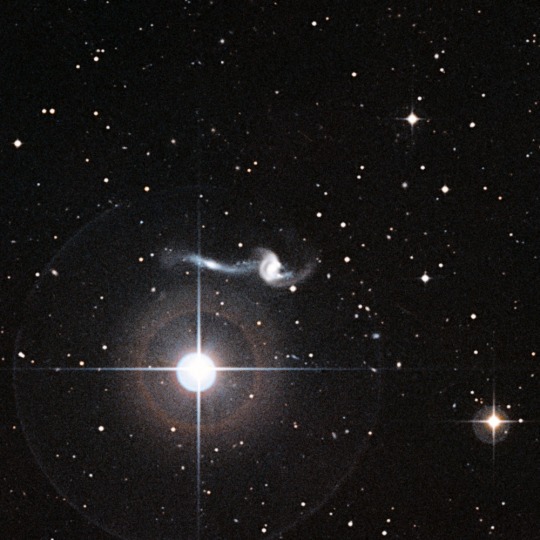

Galassie srotolate dalla gravità
NGC 7714 è una galassia a spirale relativamente vicina, situata a circa 100 milioni di anni luce di distanza dalla Via Lattea. Grazie al telescopio spaziale Hubble (prime due immagini in alto, di cui la prima è una vista ingrandita e parziale della seconda), possiamo apprezzare nel dettaglio lo sconvolgimento della struttura galattica, creato dall'attrazione gravitazionale esercitata da un'altra galassia vicina, NGC 7715, non ripresa da Hubble. La seconda galassia si vede, invece, nella terza immagine, in campo largo, tratta dalla Digital Sky Survey, e nella quarta immagine, tratta dal catalogo delle galassie peculiari di Halton Arp, all'interno del quale la coppia di galassie interagenti NGC 7714 e 7715 occupa il posto 284.
Tra 100 e 200 milioni di anni fa, le due galassie si sono avvicinate troppo l'una all'altra. La gravità reciproca ha srotolato le braccia a spirale, creando un anello di gas intorno alla più grande, NGC 7714, è un ponte di stelle che unisce le due galassie, dominato dal colore blu. Questo colore indica che il ponte è una fucina di nuove e brillanti stelle. È il luogo dove l'azione della gravità esercita l'effetto più spettacolare, agendo come un imbuto che succhia materia dalla galassia meno massiccia, NGC 7715, verso l'altra. In seguito a questa fusione, NGC 7714 è diventata una galassia starburst, cioè un luogo di elevata formazione stellare, popolato in particolare da stelle di Wolf-Rayet, cioè stelle molto massicce e dalla vita breve, che perdono rapidamente il loro involucro esterno di idrogeno, soffiato via da potenti venti stellari, lasciando allo scoperto un brillantissimo e caldo nucleo costituito principalmente da elio.
1 note
·
View note
Text
New Post has been published on Notaspampeanas
New Post has been published on http://notaspampeanas.com/site/galaxias-arriba-ciclones-abajo-6977
Galaxias arriba, ciclones abajo
La Galaxia NGC 7714 captada por el Telescopio Espacial Hubble, en su dinámica interacción con la Galaxia NGC 7715, fuera de cuadro. Crédito de la imagen: ESA, NASA. Reconocimiento: A. Gal-Yam (Instituto de Ciencias Weizmann)
Galaxias arriba, ciclones abajo. Podría ser un buen resumen de dos ejemplos que vi esta semana de cómo nos ayuda la tecnología a entender qué sucede en el Universo y en la Tierra. En una de las imágenes, del Telescopio Espacial Hubble, vemos la galaxia espiral NGC 7714 interactuando con su compañera NGC 7715. Por otro lado, contamos con otro par de imágenes de los ciclones Diamondra y Eunice, obtenidas por EUMETSAT y Suomi NPP, respectivamente.
Formas espiraladas parecen coincidir en diferentes lugares del Universo – allí arriba en el cielo, si lo prefieren – y aquí abajo, en la Tierra. Nos son mostradas por poderosos ojos tecnológicos que ayudan a que comprendamos qué sucede en la Tierra y en el Cosmos. Y su aporte nos da perspectivas inigualables de las observaciones de galaxias arriba, ciclones abajo.
Galaxias fusionándose
En el caso de la galaxia espiral NGC 7714, el Telescopio Espacial Hubble nos muestra que una galaxia se ha acercado demasiado a otra, y en esa interacción sus brazos espiralados han sido modificados, lanzando chorros de material hacia el espacio, y dispara ráfagas luminosas de formación estelar.
Este vídeo recorre la Galaxia NGC 7714, que muestra señales de una dinámica interacción con su compañera NGC 7715, en la Constelación de Piscis.
NGC 7714 es una galaxia espiral que se halla a 100 millones de años-luz de la tierra; en términos cósmicos, un vecino relativamente cercano.
La galaxia ha sido protagonista de algunos acontecimientos violentos y dramáticos en su pasado reciente. Signos reveladores de esa intensidad pueden verse en las formas extrañas de los brazos de 7714, y en la bruma de un dorado ahumado que se extiende desde el centro galáctico.
Las galaxias NGC 7714 y 7715 fusionándose. Se las conoce también como Arp 284. Ambas galaxias se hallan en el centro de la imagen, en su proceso de fusión, y apenas por debajo la estrella que parece tan cercana a ambas, se halla billones de veces más cerca que las galaxias. Crédito de la imagen: NASA, ESA, Digitized Sky Survey 2
¿Qué causó tal desfiguración? La culpable es una compañera más pequeña llamada NGC 7715, que no es visible en la imagen del Hubble, pero sí lo es en la imagen de amplio campo de Digitized Sky Survey.
Acercamiento a las galaxias NGC 7714 y NGC 7715, en la Constelación de Piscis.
Las dos galaxias se acercaron demasiado unos 100 a 200 millones de años atrás -un pestañeo en términos cósmicos- y comenzaron a alterar, modificar recíprocamente su estructura y su forma.
De esta dinámica, han resultado un anillo y dos largas colas de estrellas de NGC 7714, creando un puente entre las dos galaxias. Este puente actúa como un ducto que canaliza material de NGC 7715 hacia su compañera mayor y alimenta estallidos de formación estelar. La mayoría de la actividad de formación estelar se concentra en el centro galáctico brillante, aunque toda la galaxia es un generador de nuevos soles.
Las Galaxias Antena o Antennae, captadas en el proceso de fusión, por el Telescopio Espacial Hubble. Parecen estar en un estado ‘más avanzado’ en un dinámico abrazo cósmico. Crédito de la magen: ESA/NASA/Hubble
Los astrónomos caracterizan a NGC 7714 como una galaxia típica de Wolf-Rayet. Esto es debido a que un gran número de las nuevas estrellas en su interior son del tipo Wolf-Rayet.
Este tipo de estrellas extremadamente calientes y brillantes, nacen con decenas de veces la masa de nuestro Sol, pero pierden la mayor parte debido a los fuertes vientos.
La imagen del Hubble de NGC 7714 está compuesta de observaciones en una variada gama de longitudes de onda, que nos revelan la correlación de las nubes de gas y las estrellas de la galaxia. Esta imagen no sólo muestra la intrincada estructura de NGC 7714, sino que también revela otros muchos objetos más alejados. Las galaxias de fondo parecen tenues manchas de luz, y algunas tienen forma de espiral.
Arp 230, también conocido como IC 51, es una muestra de dos galaxias en fusión. Es otro ejemplo, porque aquí una de las galaxias compañera ‘impactó’ a la otra ‘por el medio’. Se advierte la bruma dorada que es llamada anillo polar. Crédito de la imagen: NASA/ESA/Hubble
Podemos preguntarnos si esto que vemos sucederá con nuestro propio hogar galáctico, la Vía Láctea, y nuestra galaxia más cercana: Andrómeda. Ambas se acercan a mucha velocidad, y la fusión, choque, unión, se producirá en algunos miles de millones de años. ¿El espectáculo se verá así a 100 millones de años luz de distancia? ¿Será un violento parto estelar múltiple?
Un dato interesante es que la interacción de este par de galaxias espirales NGC 7714 y NGC 7715, es conocida como Arp 284, porque Halton Arp las incluyó en su Atlas de Galaxias Peculiares.
Dos ciclones bailando
Las tormentas tropicales Diamondra y Eunice observadas por EUMETSAT.
Este mes dos ciclones tropicales, Diamondra y Eunice, se arremolinaban sobre el centro del Océano Índico. Se estimó que las tormentas no eran particularmente fuertes, ni se esperaba que tocaran tierra o causaran daños significativos. Pero su proximidad ofrece vistas espectaculares a los satélites… y a nosotros. Una vez más, nos vemos maravillados por las imágenes de galaxias arriba, ciclones abajo.
El 28 de enero de 2.015, los satélites geoestacionarios sostenidos por EUMETSAT y la Agencia Meteorológica de Japón recogieron datos infrarrojos utilizados para componer esta imagen de Diamondra y Eunice, en una danza terrestre, como NGC 7714 y NGC 7715 ensayaban su danza cósmica.
Los ciclones Eunice y Diamondra en una imagen compuesta tras tres observaciones del instrumento VIIRS del satélite Suomi NPP.
En tanto, la Visible Infrared Imaging Radiometer Suite (VIIRS), del satélite Suomi NPP adquirió otros datos que permitieron componer esta otra imagen. Tres franjas de diferentes datos de VIIRS (adquiridos a las 7:25, 9:05 y 10:50 horas UTC) fueron combinadas para generar la imagen que compartimos.
El 28 de enero de 2.015 ambas tormentas se hallaban a unos 1.500 kilómetros de distancia, cuando VIIRS las observó. Eunice, la más fuerte de las dos, fue localizada al Oeste de Diamondra. Eunice tenía vientos máximos sostenidos de unos 160 kilómetros por hora, mientras los vientos máximos de Diamondra superaban los 100 kilómetros. Ambas tormentas se desplazaban en dirección Sudeste.
Si dos ciclones tropicales se acercan el uno al otro, comienzan a rotar ciclónicamente alrededor de un eje que conecta sus centros, fenómeno que los meteorólogos llaman efecto Fujiwhara. Tales tormentas binarias pueden fusionarse si sus centros, u ojos, como también les denominamos, se acercan lo suficiente.
“Pero en este caso, los centros de los dos vórtices parecen estar demasiado lejos”, explicó Brian McNoldy, un meteorólogo de la Universidad de Miami. “Una regla de oro establece que los centros tendrían que estar separados por menos de 10 grados (unos 1.100 kilómetros) para que empiecen a girar sobre el otro de alguna manera. Las previsiones del Centro Conjunto de Advertencia de Tifones, señalan que ambas tormentas derivarán hacia el Sudeste a la misma velocidad, por lo que probablemente no llegarán a acercarse más”, precisó McNoldy.
#Arp 284#Diamondra#EUMETSAT#Eunice#Galaxia 7714#Galaxia 7715#Satélites#Suomi NPP#Telescopio Espacial Hubble
0 notes